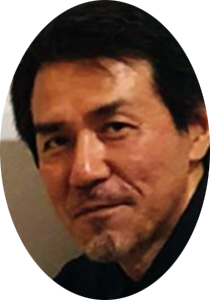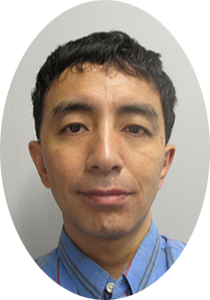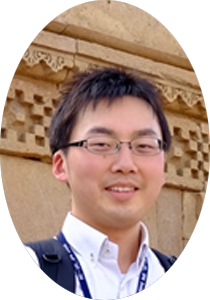Plenary Talk
[su_column size=”2/3″]
Presenter:
Prof. Hajime Ishihara
Department of Materials Engineering Science, Osaka University
[/su_column]

Title:
Interaction of Optical Vortex and Matter Systems: from Microscopic to Macroscopic Regimes and Linkage between Them
Abstract:
A remarkable effect in the interaction between the optical vortex and matter systems is the transfer of the orbital angular momentum. A lot of theoretical and experimental demonstrations have been conducted for macroscopic rotational manipulation of matters from microscale to nanoscale objects. On the other hand, in the microscopic regime, the optical vortex changes the selection rule of electronic transitions, which induces unconventional spin dynamics in solids. Interestingly, the macroscopic and microscopic degrees of freedom are sometimes linked to each other in a unique way via linear and nonlinear optical responses. In this talk, I will present some examples of the above topics and puzzling aspects about them.
Biography:
Hajime Ishihara is a Professor in Graduate School of Engineering Science at Osaka University. Since 2016, he has been the project representative of JSPS Grand-in Aid for Scientific Research on Innovative Area “Nano-Material Manipulation and Structural Order Control with Optical Forces”. His research interests are the microscopic interaction between light and nanostructures and the optical functionalities arising from their interaction. He is the fellow of the Japan Society of Applied Physics.
[su_divider top=”no” divider_color=”#ff5000″]
Invited Talk
[su_column size=”2/3″]
Presenter:
Prof. Yoshiki Kohmura
RIKEN SPring-8 Center
[/su_column]

Title:
Generation of X-ray Vortices by Bragg Reflection from Crystals and Microscopy to Diagnose Topological Charge Distribution
Abstract:
We developed a method to transfer the structure of dislocation in a crystal to the Bragg X-ray wave front and performed a phase measurement that could diagnose the dislocation. This method helps to enhance the functionality of materials affected by dislocations. The two-beam X-ray interferometry was performed to measure the Bragg reflected X-ray wave front from a spiral dislocation area in a SiC crystal. As a result, a pair of fork patterns was observed. The number of fringes changed by +1 and -1 at the phase anomalies due to generation of an X-ray vortex with the topological charge of +1. Kinematic diffraction simulation showed that X-ray vortices are generated on Bragg reflected X-rays from spiral dislocation areas. This result is realized by using sufficiently large spatial coherence of the irradiated X-rays.
Biography:
Yoshiki Kohmura is currently a Team Leader of Synchrotron Radiation Imaging Instrumentation Team at SPring-8 facility, Japan. He received his PhD in the Department of Physics, Graduate School of Science, the University of Tokyo in 1994. He has been working for RIKEN SPring-8 Center since 1996. He is involved in developing various x-ray optical elements and methodologies for synchrotron radiation experiments. In the past ten years, he studied the novel waveguiding phenomenon of x-rays occurring inside slightly deformed crystals and its application to fast switching of x-rays.
[su_divider top=”no” divider_color=”#ff5000″]
Invited Talk
[su_column size=”2/3″]
Presenter:
Dr. Toru Tsujimura
National Institute for Fusion Science, National Institutes of Natural Sciences
[/su_column]

Title:
Propagation Properties of Optical Vortex in Magnetized Plasma
Abstract:
We investigated theoretically propagation properties of an optical vortex with a helical wavefront in cold uniform magnetized plasmas in an electron cyclotron (EC) range of frequencies. We describe the effects of the helical wavefront of the vortex EC wave on the wave fields in magnetized plasmas as anisotropic media. These effects become significant as the topological charge of the vortex EC wave increases or the distance from the phase singularity becomes small. The different propagation properties are also confirmed in the propagation of Laguerre–Gaussian beams on three-dimensional simulations with the finite element method. We found a remarkable phenomenon on mode conversion in the vortex EC wave propagation, which suggests an optical vortex can be a new tool to heat high-density plasmas.
Biography:
Toru Ii Tsujimura received the B.Eng., M.Eng., and D.Eng. Degrees from the University of Tokyo in 2009, 2011, and 2014, respectively. Since 2014, he has been working as an assistant professor at National Institute for Fusion Science, National Institutes of Natural Sciences (NINS). His current research focuses on wave heating in fusion plasma at the Large Helical Device. He was a representative of NINS programs for cross-disciplinary study in 2018 and 2019, leading the program on helical wavefront measurements of optical vortices emitted by high-energy electrons.
[su_divider top=”no” divider_color=”#ff5000″]
